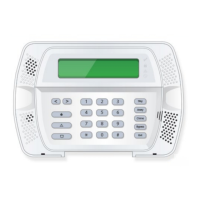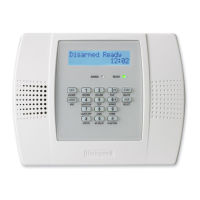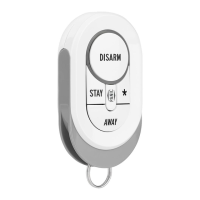Section 5 – Gateways
5-7
Addressing the PID Gateway
To address the PID gateway, perform the following steps:
Step Action
1 Set the RS-485 address jumpers (E2 – E9) to Communication Group 3 and to a Unit
Number from 0 to 7 (see
Figure 5-1
).
2 Set jumpers E10 and E11 to the appropriate setting:
•
Remove jumpers if gateway is powered from control unit.
•
Leave jumpers intact if gateway is powered from a separate power supply module.
Installing Sensors to the PID
All sensors are connected to the PIDs via branch cables. See
Figures 5-2, 5-3a & b, and 5-4
.
Figure 5-3a
shows the wiring connection for a 4-wire smoke detector that uses a power supervision relay. Three
types of branch cables are available for sensor connections. Each is a 4-conductor, 22-AWG cable,
differing only in the thickness or type of insulation for the specific application for which the cable is
approved. The cables are:
•
493744 (D6441-4B) Inside BA Cable - approved for BA and HUA loops only.
•
487347 (B6466-4) - approved for FA, SUPV, and Telco connections. May be used for BA.
•
494468 (B6468-4) - approved for all loop connections intended for use in air-handling plenums.
Do not connect more than 8 smoke detectors to a single PID, and make sure that all smoke detectors so
connected are physically located in the same fire point.
Sensor Power Classification
The various types of sensors employed with the FOCUS 200 PLUS System can be divided into the
following basic categories according to the source of power required:
Sensor Type Power Source Wiring Configuration
Non-powered
sensor
Does not require system or
independent operating power, or
draws only a small amount of
current from the loop.
Uses all four conductors of the branch cable
with the EOLR located in PID.
•
Black = low-side feed
•
Red = high-side feed
•
Yellow = low-side return
•
Blue = high-side return
System-powered
sensor
Powered via the PID branch
cable. The sensor must be capable
of operating between 8 and 15
volts, with a maximum current of
85mA.
Uses two conductors of the branch cable,
black (-) and red (+), for nominal 12VDC
power; and two conductors, yellow and blue,
for connection of a separately ordered 3010-
ohm EOLR. The EOLR in the PID is not
used.
Independently
powered sensor
Uses operating power from an
external source.
Uses a separate power source and does not
need power from the quad trunk cable. Is
wired in the same way as a non-powered
sensor.
System-powered sensors cannot be adjusted or tested until the system power has been turned on, the
point data has been loaded into the control unit, and communication has been established between the
control unit and the gateway and between the gateway and its PID's.

